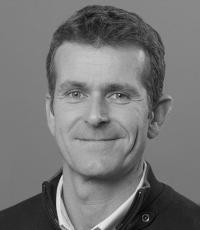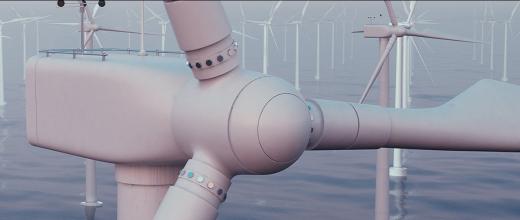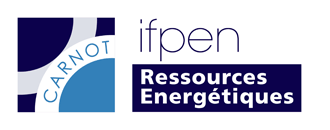 wind energY
wind energY
Our networks
IFPEN’s wind energy research is conducted within the context of an excellence network including industrial and academic partners:
- the Ancre alliance,
- the International Energy Agency’s Technological Cooperation Program, IEA Wind, in which IFPEN represents France on the Executive Committee and coordinates a task dedicated to the integrated design of floating wind turbine networks with NREL and GDG,
- the PEPR (French priority research program) relating to the acceleration of advanced energy system technologies (TASE)
What is IEA Wind TCP?
Under the patronage of the International Energy Agency, the wind technology collaboration program (IEA Wind TCP) pools the efforts of the sector’s players in member states. It coordinates research activities aimed at overcoming the various obstacles that could hamper the large-scale development of the sector, offers guidance on best practices and provides researchers and industry with a platform for exchange. An annual report is published detailing the latest advances on the theme.
H2020 HIPERWIND project: reducing the costs of offshore wind energy
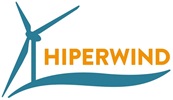
The project entitled HIPERWIND (HIghly advanced Probabilistic design and Enhanced Reliability methods for high-value, cost-efficient offshore WIND), which started in December 2020 and will last three and a half years, is led by the Technical University of Denmark (DTU) with six partners: EDF, Electric Power Research Institute, IFPEN, Bergen University, DNV, and ETH-Zürich. Its aim is to significantly reduce the cost of offshore wind turbines by improving the accuracy of numerical models and quantifying the different sources of uncertainties in these models.
HIPERWIND covers the entire design chain, ranging from on-site measurements to wind and atmospheric modeling, followed by the analysis of wake within a farm.
The project also addresses the individual design of each wind turbine, its mechanical constraints and its lifetime within a reliability context. The last step involves looking at how to create value by reducing costs and increasing the electricity produced.
IFPEN’s contribution relates to uncertainty quantification in wake simulations and in the representation of aerodynamic and hydrodynamic loads. IFPEN is also contributing to the development of new reliability design methods in extreme conditions.

The HIPERWIND project has received funding from the European Union’s Research and Innovation Programme Horizon 2020 under Grant Agreement No 101006689.
ANR MOMENTA project: OPTIMIZING THE EVALUATION OF TURBULENCE CAUSED BY A WIND TURBINE
The three-year MOMENTA (farM rOtor ModEl accouNting aTmospheric wAke turbulence) project, subsidized by the French National Research Agency (ANR), is aimed at improving knowledge of turbulence phenomena around wind turbines.
Coordinated by the Hydrodynamics, Energy and Atmospheric Environment Research Laboratory run by Centrale Nantes engineering school and the CNRS (French National Center for Scientific Research) (LHEEA), MOMENTA is being conducted in partnership with two other academic institutions: the Laboratoire d’Aérologie (French Aerology Laboratory) operated by Paul Sabatier-Toulouse III University and the CNRS, and PRISME, the Multidisciplinary Mechanical Systems Engineering Research Laboratory, which is run by INSA (French National Institute of Applied Sciences)-Centre Val de Loire and Orléans University. VALEMO, which specializes in renewable energy facilities, is also actively involved alongside IFPEN, whose contribution is hinged around its wind turbine design and simulation expertise.
MOMENTA makes it possible to better predict the aeroelastic loads that the wake from one turbine generates for the next, so that these loads can be better incorporated during the wind farm design phase. To achieve this objective, the MOMENTA project teams begin by conducting wake turbulence measurements around a wind turbine using a drone. Proposed improvements are then implemented and tested in the DeepLines WindTM software tool developed by IFPEN in partnership with Principia. This solver was notably used for the design of the Provence Grand Large wind farm in partnership with SBM Offshore, for the Hywind floating system project developed by Equinor in Scotland and for a double turbine system project on behalf of Hexicon.
The ultimate objective is to optimize the configuration of wind farms arranged in closely spaced rows, in terms of energy efficiency and load reduction.
EoCoE 2, European center of excellence dedicated to energy
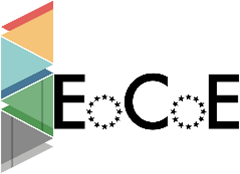
The purpose of the EoCoE (Energy Oriented Center of Excellence) is to develop and apply cutting-edge computational methods in the field of the energy transition at a European level.
Coordinated by the CEA (French Alternative Energies and Atomic Energy Commission), EoCoE-II is led with 16 other European, industrial and academic partners.
The project aims to use high-performance computing (HPC) to address scientific challenges in terms of modeling and design in five key energy transition sectors: wind power, weather forecasting, new materials for photovoltaic cells, batteries and supercapacitors, water (geothermal energy and hydroelectricity) and fusion. The other objective is to build a sustainable European infrastructure to coordinate the deployment of HPC for energy. IFPEN’s teams will primarily be responsible for wind turbine simulation using the most up-to-date HPC resources.
 Supporting the transition to clean, low-carbon energy, EoCoE secured additional funding in 2019, amounting to €8.3 million for three years from the European Commission under Grant Agreement No 824158.
Supporting the transition to clean, low-carbon energy, EoCoE secured additional funding in 2019, amounting to €8.3 million for three years from the European Commission under Grant Agreement No 824158.
* BSC, Cerfacs, Ciemat, CNR, CNRS, DDN, Enea, FAU, Fraunhofer, FZJ, Inria, MPG, PSNC, UBAH, ULB, UNITN
ANR SmartEole project: optimizing electricity production with smart rotors
The ANR SmartEole project, completed in 2019, aimed to increase the productivity and reduce the maintenance costs of a wind farm through the use of advanced control systems. In particular, it developed the WiSE-WindField™ software, which reconstructs the wind field from measurements made by LIDAR technology.
SmartEole was also an important milestone in the implementation of advanced control and diagnostic strategies using a digital twin. Thanks to instrumentation adapted to the tower and nacelle of a wind turbine, it has enabled a better understanding of the turbine's vibratory behavior and the validation, with the help of a digital model, of the WISE-Control™ software, devoted to orienting the blades and the nacelle according to the wind.
Find out more about SmartEole







